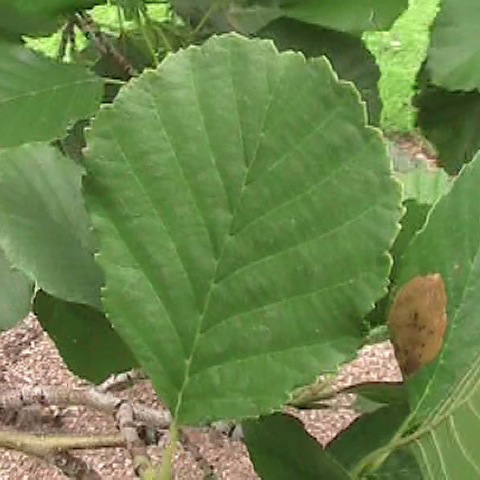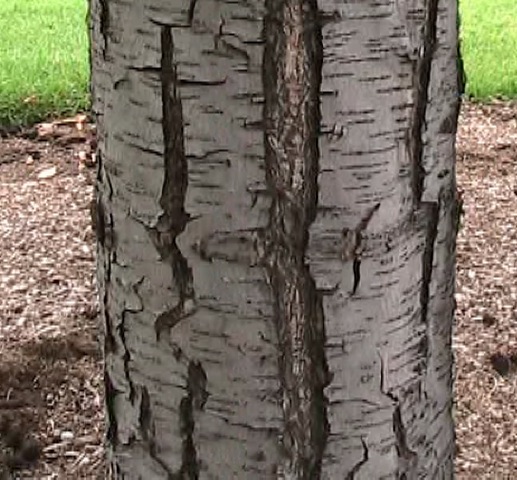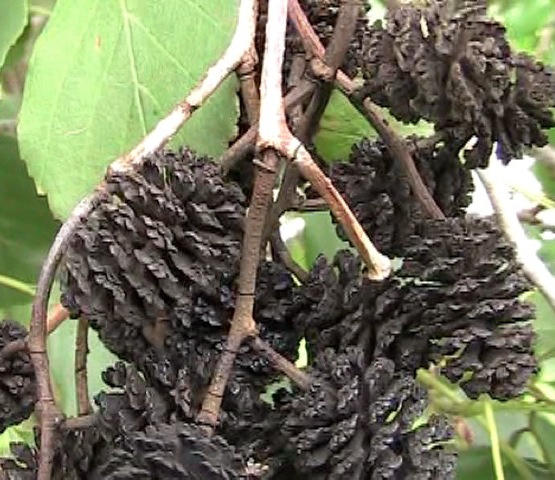| PSC 2620: Woody Trees and Shrub | Course Home | Week 11 |
Alnus glutinosa - Common or Black Alder
Plant Viewer
 |
 |
| Alnus glutinosa leaves are dark green and ovate. They are 2-4 inch long and have a doubly serrated margin. | The bark is silvery-brown when young and matures a dark brown color. |
 |
 |
| 2-4 inch long catkins from in groups. | The fruit is small purplish-brown strobiles that are shaped like eggs. They form in clusters on the stem. |
Plant Description
Alnus glutinosa, or Common or Black Alder, is a medium sized shade tree with an upright form. It grows 40-60 feet high and 20-40 feet wide. When young the tree has a fairly strong pyramidal form, but becomes quite irregular and upright at maturity. It can be found in both a multi-stem form and regular tree-form, both of which are attractive. It naturally occurs in small groupings of trees. It prefers moist locations, and can tolerate standing water. It will survive in a dry location, but not severe drought. Young bark is silvery-brown and has prominent horizontal lenticels. As the bark matures it turns a dark brown and forms ridges.
The leaf is ovate in shape with a doubly serrated margin. The leaf is a dark green color on the top and a bright green color beneath. The leaves are 2-4 inches long and form alternately on the stem. 2-4 inch long narrow brown catkins form on the tree in groupings of three or more. Purplish colored small strobile are shaped like eggs and form in groupings on the stems. Up close they provide an interesting and unique texture to the tree that is quite attractive. In the fall the strobiles turn brown and open to release the seeds. The strobile will persist on the tree throughout the winter.
Landscape Use
It is best used in moister areas. If used along a stream bank the tree will quickly spread and fill in to create a dense colony. It is good to use as a tree in parks and campuses, and can be used on residential lots thanks to its narrow width.
Points of Interest
It is susceptible to cankers and the alder lace bug, but neither seem to be serious pests in our climate.